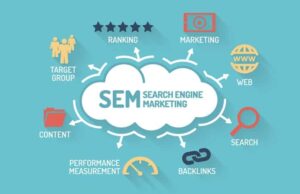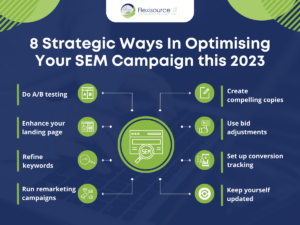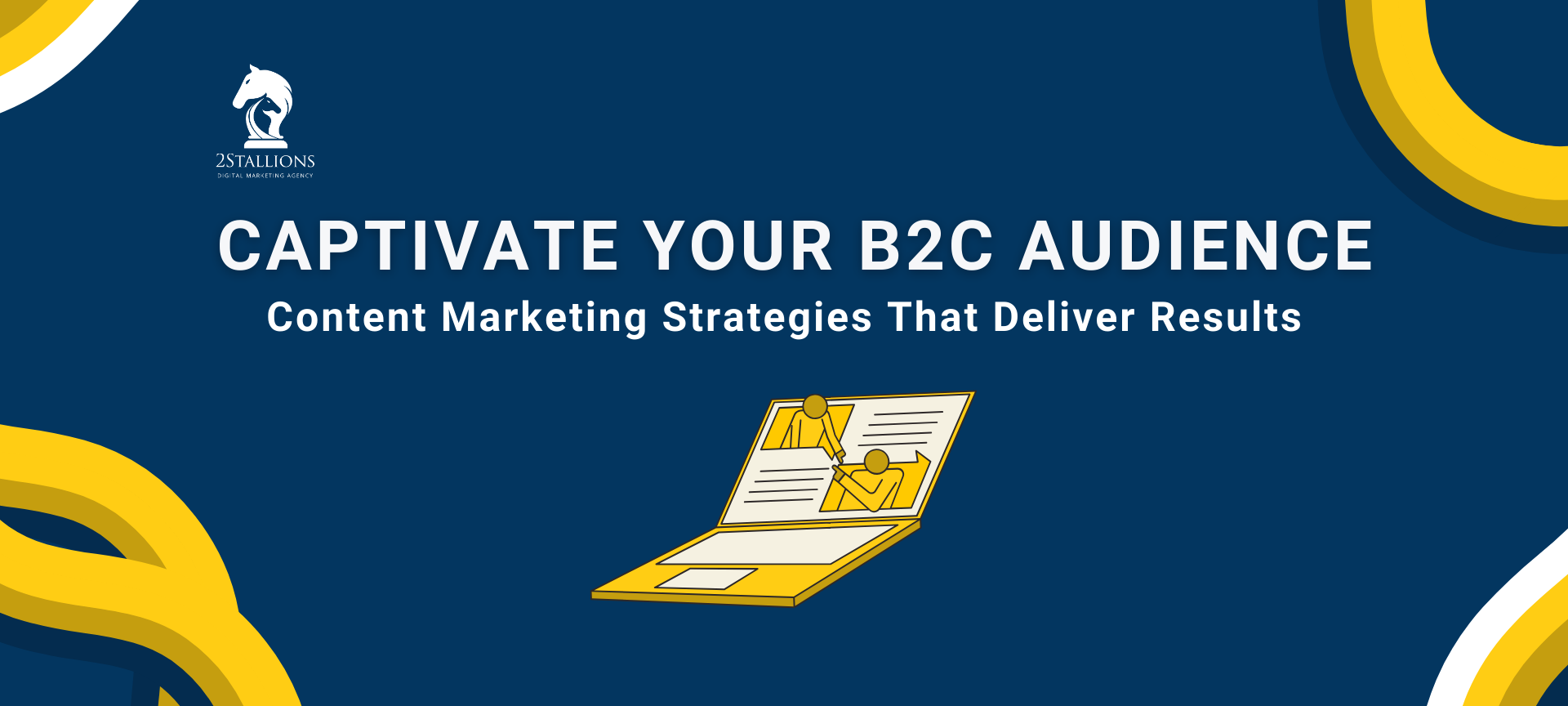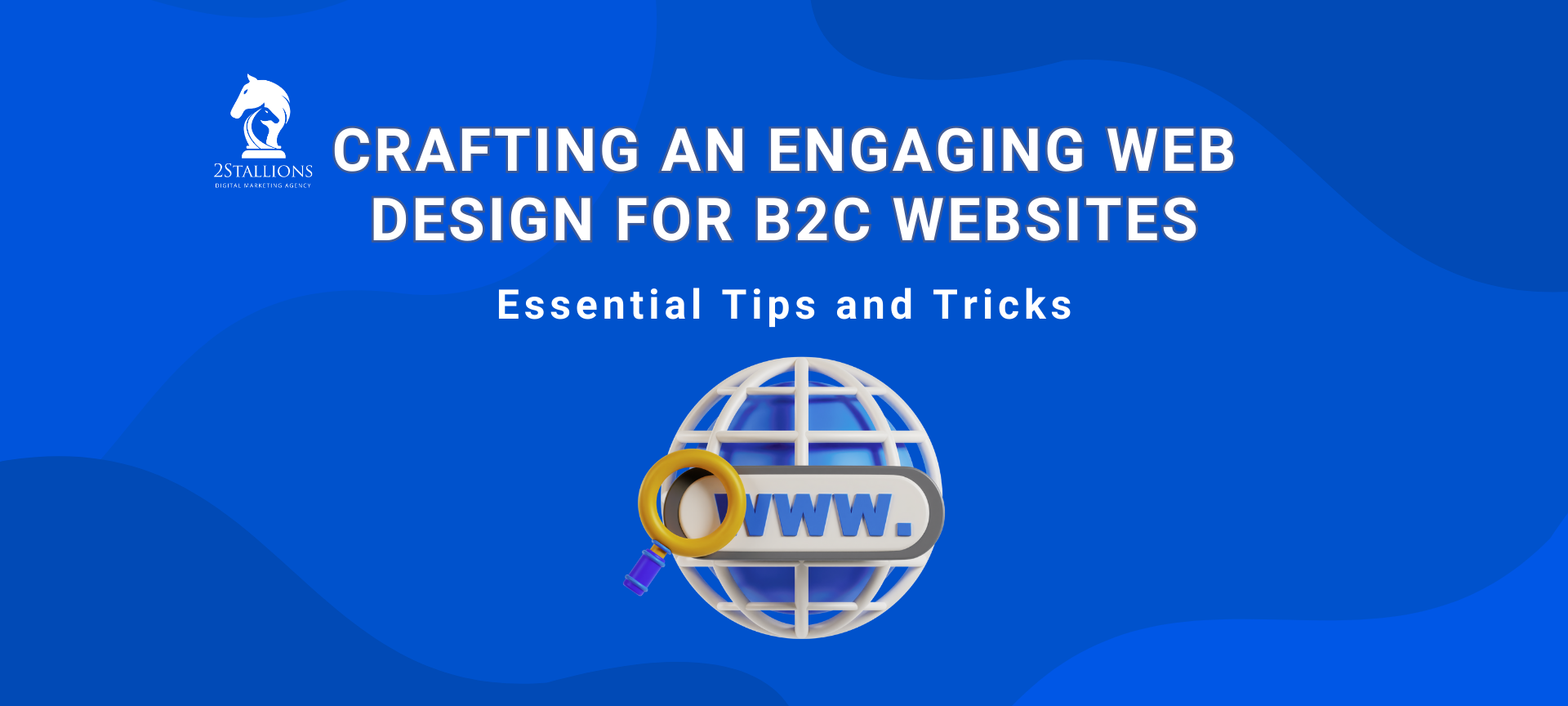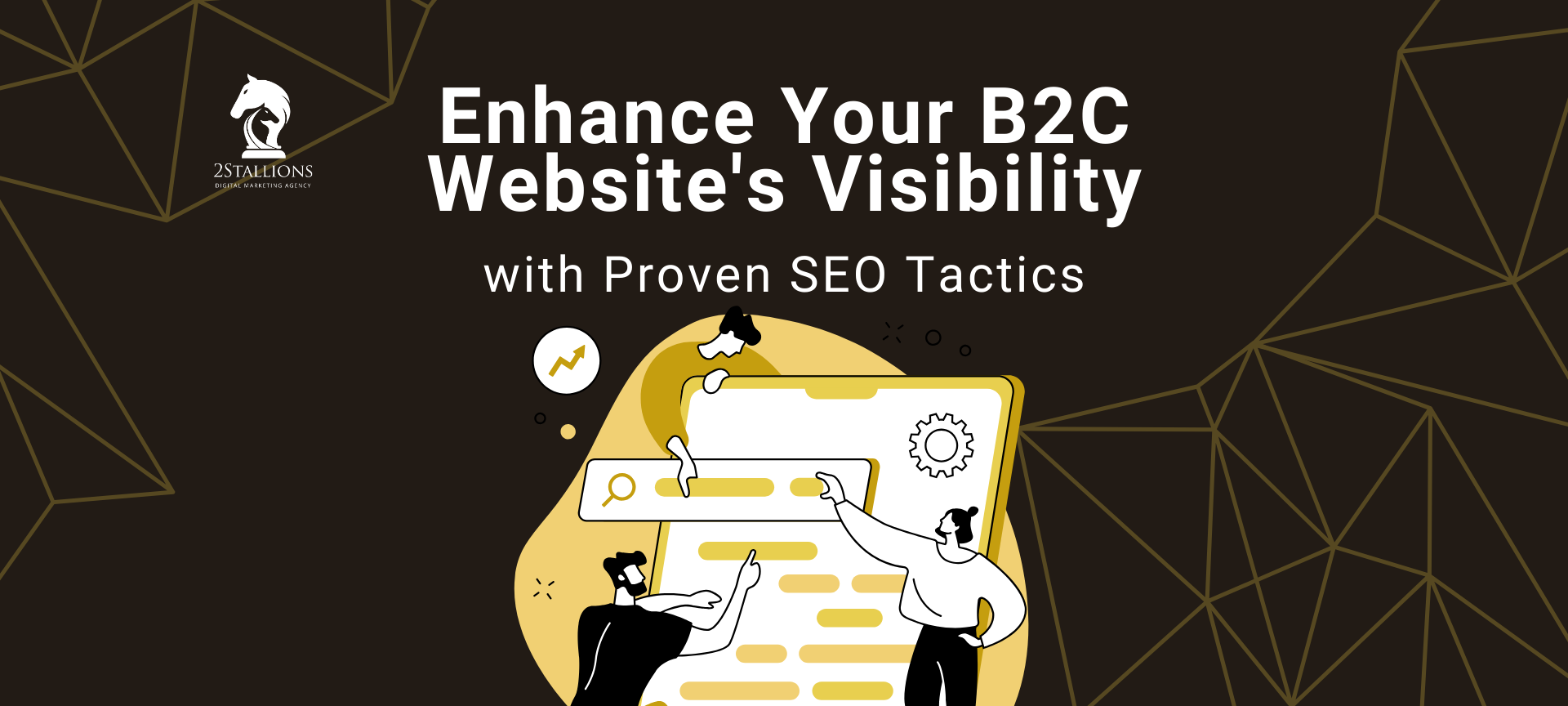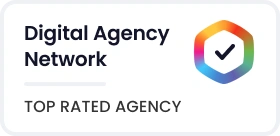SHARE

Search Engine Marketing (SEM) is a powerful tool that drives B2C (Business-to-Consumer) growth. By understanding the basics of SEM and developing an effective strategy, businesses can increase their online visibility, attract the right audience, and boost sales. In this comprehensive guide, we will explore the importance of SEM in B2C marketing, the key components of an effective SEM strategy, and advanced techniques that can further drive growth.
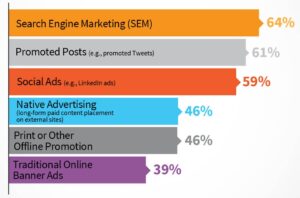
(Source: Martech )
Understanding the Basics of SEM
SEM plays a vital role in B2C marketing, allowing businesses to reach their target audience through search engine advertising. By displaying targeted ads on search engine results pages (SERPs), companies can increase their visibility, attract quality traffic, and drive conversions.
The Importance of SEM in B2C Marketing
In today’s digital age, consumers rely heavily on search engines to find information, products, and services. It’s like having a personal assistant who can respond fast to any query. This reliance on search engines creates a huge opportunity for businesses to connect with potential customers.
By incorporating SEM into their marketing strategy, businesses can ensure that their offerings are visible to potential customers actively searching for related keywords at the exact moment. Imagine a customer searching for “best running shoes” and your ad at the top of the search results, showcasing your latest collection of high-performance footwear. This level of visibility can significantly impact brand awareness and customer acquisition.
Furthermore, SEM provides opportunities for businesses to compete with larger brands on a level playing field. Unlike traditional advertising methods, where big budgets often dictate success, SEM allows businesses of all sizes to reach their target audience effectively. With effective keyword targeting and compelling ad copy, even small businesses can capture the attention of their target audience and drive B2C growth.
Key Components of an Effective SEM Strategy
An effective SEM strategy consists of various components that drive B2C growth. Let’s take a closer look at some of these key components:
- Identifying your target audience: Understanding your target audience’s demographics, preferences, and search behaviours is crucial for effective SEM. Tailoring your keywords and ad copy to their needs can increase the chances of attracting quality traffic. For example, if you sell luxury skincare products, targeting an audience interested in high-end beauty and wellness will yield better results than a generic approach.
- Choosing the right keywords: Conducting thorough keyword research is essential for SEM success. It’s not just about finding keywords with high search volume; it’s about finding the right keywords that align with your offerings. By identifying high-value keywords relevant to your products or services, you can position your ads in front of the right audience and drive qualified traffic to your website. This targeted approach ensures that you are using resources on relevant clicks.
- Creating compelling ad copy: Your ad copy should be concise, persuasive, and tailored to resonate with your target audience. It’s your chance to make a lasting impression in a limited space. Highlighting your products or services’ unique selling points can increase the likelihood of attracting clicks and conversions. A well-crafted ad copy can evoke emotions, address pain points, and convince potential customers to choose your brand over competitors.
Remember, SEM is not a one-time effort. It requires continuous monitoring, optimisation, and adaptation to stay ahead of the competition. By staying up-to-date with the latest trends and best practices, businesses can leverage SEM to its full potential and achieve sustainable B2C growth.
( Source: Marketing Media )
Developing a Successful SEM Strategy for B2C Growth
Developing a successful Search Engine Marketing (SEM) strategy is crucial for businesses to drive Business-to-Consumer (B2C) growth. This strategic approach involves meticulous planning and precise execution to ensure optimal results in the digital landscape.
When delving into the realm of SEM, businesses must first and foremost identify their target audience precisely. This involves a comprehensive analysis of market trends, customer behaviour, and data insights for a clear picture of the intended audience’s demographics, interests, and pain points. By understanding these key aspects, businesses can tailor their keyword selection and ad copy to engage and resonate with their target demographic.
Identifying Your Target Audience
Before diving into SEM, it is essential to have a clear understanding of your target audience. By conducting market research and analysing customer data, you can define your target audience’s demographics, interests, and pain points. This information will inform your keyword selection and ad copy, allowing you to reach and resonate with your audience.
Moreover, selecting the right keywords is fundamental for a successful SEM strategy. Businesses should initiate this process by brainstorming relevant keywords and phrases that align closely with their products or services. Subsequently, leveraging keyword research tools becomes imperative to identify high-performing, popular and competitive keywords within the target market. Striking a harmonious balance between relevance and competitiveness is key to positioning ads in front of the right audience segment.
Choosing the Right Keywords
Keyword selection is a critical aspect of SEM. Start by brainstorming relevant keywords and phrases that align with your products or services. Then, use keyword research tools to identify popular and competitive keywords the target audience uses. Striking the right balance between relevance and competition can position your ads in front of the right audience.
Furthermore, compelling ad copy plays a pivotal role in the success of SEM campaigns. Crafting engaging, concise, and persuasive copy that accentuates the unique selling points of products or services is essential. You must choose a language that resonates with the intended audience and drives them to act. In addition, incorporating strong calls-to-action (CTAs) within the ad content ensures user engagement and drives conversions effectively.
Creating Compelling Ad Copy
The success of your SEM campaigns relies heavily on your ad copy. Craft compelling, concise, and persuasive copy that highlights the unique benefits of your products or services. Use language that resonates with your target audience and encourages them to take action. Additionally, include strong calls-to-action (CTAs) to prompt clicks and conversions.
( Source: Flexisource )
Optimising Your SEM Campaigns
Once your SEM campaigns are up and running, it is crucial to optimise them to maximise their effectiveness. Here are key optimisation techniques:
The Role of Landing Pages in SEM
Landing pages are dedicated web pages that your SEM ads direct visitors to. Optimise your landing pages by ensuring they are relevant, user-friendly, and aligned with your ad copy. Use compelling headlines, clear product descriptions, and impactful visuals. A well-designed landing page can significantly improve your conversion rate.
Furthermore, you should conduct A/B testing on your landing pages to determine which elements resonate best with your target audience. By experimenting with different layouts, calls-to-action, and images, you can refine your landing pages for optimal performance. Remember, a successful SEM campaign drives traffic and converts visitors into customers through well-crafted landing pages.
Utilising Ad Extensions for Better Visibility
Ad extensions are additional pieces of information that you can add to your ads, such as phone numbers, reviews, or site links. By leveraging ad extensions, you can increase the visibility and appeal of your ads. They provide users with valuable information and options, increasing click-through rates and conversions.
Moreover, consider implementing dynamic keyword insertion in your ad extensions to tailor your messaging to match the user’s search queries. This personalised approach can enhance the relevance of your ads and drive higher engagement. Ad extensions offer a valuable opportunity to stand out in a crowded digital landscape and capture the attention of potential customers.
Monitoring and Adjusting Your SEM Campaigns
Regularly monitor the performance of your SEM campaigns. Track key metrics such as click-through rates (CTR), conversion rates, and return on investment (ROI). Use this data to identify areas for improvement and make necessary adjustments. A data-driven approach will help you optimise your campaigns and drive B2C growth.
In addition, consider implementing automated bidding strategies to streamline the optimisation process. Machine learning algorithms can analyse vast amounts of data in real time to adjust bids based on device, location, and time of day. By harnessing the power of automation, you can enhance the efficiency of your SEM campaigns and achieve better results with less manual effort.
Advanced SEM Techniques for B2C Growth
Beyond the basics, several advanced SEM techniques can further drive B2C growth:
Exploring Remarketing Strategies
Remarketing allows you to target users who have previously interacted with your website or shown interest in your offerings. By serving personalised ads to these prospects, you can increase brand recall and encourage them to return and complete a purchase. Remarketing can be a powerful tool for nurturing leads and driving B2C growth.
Leveraging Local Search Advertising
For businesses with physical locations, local search advertising is a must. Targeting ads to users in specific geographic areas can increase foot traffic to your store and drive local sales. Utilise location-specific keywords and ad copy to reach potential customers actively looking for products or services in their vicinity.
Understanding the Impact of Mobile Search
Optimising your SEM campaigns for mobile devices is crucial. Mobile search continues to grow, and businesses must ensure that their ads and landing pages are mobile-friendly, load quickly, and provide a seamless user experience. By prioritising mobile optimisation, you can tap into the immense potential of the mobile audience and drive B2C growth.
In conclusion, SEM strategies play a crucial role in driving B2C growth. By understanding the basics of SEM, developing a successful SEM strategy, optimising your campaigns, and exploring advanced techniques, businesses can increase online visibility, attract the right audience, and ultimately boost sales. Stay proactive, monitor performance metrics, and adapt your strategies to ensure long-term success in the competitive B2C landscape.
Frequently Asked Questions About SEM Strategies That Drive B2C Growth: A Comprehensive Guide
What are the key SEM strategies for B2C growth?
Key SEM strategies include targeted keyword research, creating compelling ad copy, utilising smart bidding strategies, and continuously optimising landing pages for higher conversions.
How can B2C companies effectively use SEM to reach their target audience?
B2C companies can effectively reach their target audience by using demographic and psychographic targeting in their SEM campaigns, tailoring messages to specific buyer personas, and focusing on the platforms where their audience is most active.
What role does mobile optimisation play in SEM for B2C companies?
Mobile optimisation is crucial as searches and transactions mainly occur on mobile devices. Ensuring that ads and landing pages are mobile-friendly enhances user experience, improves ad quality scores, and increases conversion rates.
How can SEM contribute to long-term business growth in the B2C sector?
SEM contributes to long-term growth by building brand awareness, generating immediate leads, and providing measurable ROI through data-driven strategies. Regularly updated SEM tactics can adapt to market changes and maintain competitiveness.


